
®
WARNING: If the information in this manual is not followed
exactly, a fire or explosion may result causing property
damage, personal injury, or loss of life.
— Do not store or use gasoline or other flammable vapors
and liquids in the vicinity of this or any other appliance.
— WHAT TO DO IF YOU SMELL GAS
• Do not try to light any appliance.
• Do not touch any electrical switch; do not use any
phone in your building.
• Immediately call your gas supplier from a neighbor’s
phone. Follow the gas supplier’s instructions.
• If you cannot reach your gas supplier, call the fire
department.
— Installation and service must be performed by a quali-
fied installer, service agency, or the gas supplier.
WARNING: Improper installation, adjust-
ment, alteration, service, or maintenance
can cause injury or property damage.
Refer to this manual for correct installa-
tion and operational procedures. For
assistance or additional information
consult a qualified installer, service
agency, or the gas supplier.
Save this manual for future reference.
BLUE FLAME
VENT-FREE PROPANE AND NATURAL
GAS GREENHOUSE CO2 GENERATOR
OWNER’S OPERATION AND INSTALLATION MANUAL
WARNING: This is an unvented gas-
fired appliance. It uses air (oxygen) from
the space in which it is installed. Provi-
sions for adequate combustion and ven-
tilation air must be provided. Refer to
Air for Combustion and Ventilation
sec-
tion on page 3 of this manual.
WARNING: This appliance must not be washed. Use of a pressure washer, water or liquid cleaning
solution on this appliance can cause severe personal injury or property damage due to water and/or
cleaning solution:
• In electrical components, connections and wires causing electrical shock or component failure.
• On gas control components causing corrosion which can result in gas leaks and fire or explosion
from the leak.
Appliance must be cleaned without being subjected to liquid spray or excessive wetting.
This appliance is only for use with the type of gas indicated on the rating plate.
This appliance is not convertible for use with other gases.
This appliance is not for residential use.
DESA International • 2701 Industrial Drive • P.O. Box 90004 • Bowling Green, KY • 42102-9004
RN30E-CAN - Natural Gas
RP30E-CAN - Propane/LP Gas

2
105056
BLUE-FLAME VENT-FREE PROPANE/LP AND
NATURAL GAS GREENHOUSE CO2 GENERATOR
SAFETY
INFORMATION
WARNING ICON G 001
WARNINGS
IMPORTANT: Read this Owner’s
Manual carefully and completely
before trying to assemble, operate,
or service this appliance. Improper
use of this appliance can cause
serious injury or death from burns,
fire, explosion, electrical shock, and
carbon monoxide poisoning.
DANGER: Carbon monoxide
poisoning may lead to death!
Carbon Monoxide Poisoning: Early
signs of carbon monoxide poisoning re-
semble the flu, with headaches, dizziness,
or nausea. If you have these signs, the appli-
ance may not be working properly. Get
fresh air at once! Have appliance serviced.
Some people are more affected by carbon
monoxide than others. These include preg-
nant women, persons with heart or lung
disease or anemia, those under the influence
of alcohol, and those at high altitudes.
Propane/LP and Natural Gas: Propane/
LP and Natural gas are odorless. An odor-
making agent is added to both gases. The
odor helps you detect a gas leak. However,
the odor added to these gases can fade. Gas
may be present even though no odor exists.
Make certain you read and understand all
Warnings. Keep this manual for reference.
It is your guide to safe and proper operation
of this appliance.
GENERAL HAZARD WARN-
ING: Failure to comply with the
precautions and instructions
provided with this appliance,
can result in death, serious
bodily injury and property loss
or damage from hazards of fire,
explosion, burn, asphyxiation,
carbon monoxide poisoning,
and/or electrical shock.
If you need assistance or ap-
pliance information such as
an instructions manual, labels,
etc. Contact the manufacturer.
WARNING: Fire, burn, in-
halation, and explosion haz-
ard. Keep solid combustibles,
such as building materials,
paper or cardboard, feathers,
straw and dust a safe distance
away from the appliance as
recommended by the instruc-
tions. Never use the appliance
in spaces which contain or
may contain volatile or air-
borne combustibles, or prod-
ucts such as gasoline, sol-
vents, paint thinner, dust par-
ticles or unknown chemicals.
WARNING: Not for home
or recreational vehicle use
WARNING: Any change to this
appliance or its controls can be
dangerous.
1. This appliance is only for use with the
type of gas indicated on the rating plate.
This appliance is not convertible for use
with other gases.
2. Do not place propane/LP supply tank(s)
inside any structure. Locate propane/
LP supply tank(s) outdoors.
3. If you smell gas
• shut off gas supply
• do not try to light any appliance
• do not touch any electrical switch;
do not use any phone in your building
• immediately call your gas supplier
from a neighbor’s phone. Follow the
gas supplier’s instructions
• if you cannot reach your gas supplier,
call the fire department
4. Never install the CO2 generator
• in a home
• in a recreational vehicle
• where flammable objects are less
than 36 inches from the front, top, or
sides of the appliance
• in high traffic areas
• in windy or drafty areas
5. This appliance needs fresh, outside air
ventilation to run properly. This appli-
ance has an oxygen depletion sensor
(ODS) pilot light safety system. The
ODS shuts down the appliance if not
enough fresh air is available. See Air
for Combustion and Ventilation, pages
3 through 5.
6. Keep all air openings in the front and
bottom of appliance clear and free of
debris. This will insure enough air for
proper combustion.
7. If appliance shuts off, do not relight
until you provide fresh, outside air. If
appliance keeps shutting off, have it
serviced.
8. Do not run CO2 generator
• where flammable liquids or vapors
are used or stored
• under dusty conditions
9. Never place any objects on the appli-
ance.
10. Surface of appliance becomes very hot
when running appliance. Keep children
and adults away from hot surface to
avoid burns and clothing ignition. CO2
generator will remain hot for a time
after shutdown. Allow surface to cool
before touching.
11. Make sure grill guard is in place be-
fore running appliance.
12. Carefully supervise young children when
they are in same area with appliance.
13. Do not use appliance if any part has
been under water. Immediately call a
qualified service technician to inspect
the appliance and to replace any part
of the control system and any gas con-
trol which has been under water.
14. Turn off appliance and let cool before
servicing. Only a qualified service per-
son should service and repair CO2
generator.
15. Operating appliance above elevations
of 4,500 feet could cause pilot outage.
16. To prevent performance problems, do
not use propane fuel tank of less than
100 lbs. capacity.
17. The CO2 generator should be inspected
at least annually by a qualified service
agency.
18. Do not operate appliance with front
panel removed.

3
105056
OWNER’S MANUAL
PRODUCT
IDENTIFICATION
Figure 1 - Vent-Free Propane/LP or Natural Gas Appliance
PRODUCT
FEATURES
Safety Device
This appliance has a pilot with an Oxygen
Depletion Sensor Shutoff System (ODS).
The ODS/pilot is a required feature for vent-
free CO2 generators. The ODS/pilot shuts
off the CO2 generator if there is not enough
fresh air.
Piezo Ignition System
This CO2 generator has a piezo ignitor. This
system requires no matches, batteries, or
other sources to light appliance.
UNPACKING
1. Remove CO2 generator from carton.
2. Remove all protective packaging ap-
plied to CO2 generator for shipment.
3. Check CO2 generator for any shipping
damage. If unit is damaged, promptly
inform dealer where you bought it.
LOCAL CODES
Install and use appliance with care. Follow all
local codes. In the absence of local codes, use
the latest edition of National Fuel Gas Code
ANSI Z223.1, also known as NFPA 54* and
Canadian Gas Code B-149.1 and 2-M95,
Section 6.3 gas installation code
.
*Available from:
American National Standards Institute, Inc.
1430 Broadway
New York, NY 10018
National Fire Protection Association, Inc.
Batterymarch Park
Quincy, MA 02269
Ignitor Button
Control Knob
Cabinet
Front
Panel
Heat Shield
Grill
Guard
AIR FOR
COMBUSTION AND
VENTILATION
PROVIDING ADEQUATE
VENTILATION
Unconfined Space
Can Gas Code B-149.1 and 2-M95, Section
6.3.3 states “An appliance installed for the
production of carbon dioxide in a green-
house may take its combustion air from
inside the greenhouse when the rate of com-
bustion does not exceed 20 Btuh per ft
3
(0.2
kW per m
3
) of greenhouse volume and the
concentration of carbon monoxide in the
atmosphere does not exceed 35 ppm. The
concentration of carbon dioxide and carbon
monoxide shall be verified upon initial
startup.
Confined Space
Ventilation air shall be supplied in accor-
dance with Can Gas Code B-149.1 and 2-
M95, Sections 7.2 and 7.3 and/or local codes.
This CO2 generator is intended for installa-
tion in a greenhouse only.
This appliance shall not be installed in a
confined space or unusually tight construc-
tion unless provisions are provided for ad-
equate combustion and ventilation air.
Produce Storage Areas
Can Gas Code B-149.1 and 2-M95, Section
6.3.2 states “An appliance used in a produce
storage area shall take its combustion air
from outside the storage area”.
WARNING: This CO2 genera-
tor shall not be installed in a con-
fined space unless provisions are
provided for adequate combus-
tion and ventilation air. Read the
following instructions to insure
proper fresh air for this and other
fuel-burning appliances in your
greenhouse. Install in accordance
with
Can Gas Code B-149.1 and
2-M95, Section 6.3
Gas Installa-
tion Code and/or local codes.
Continued

4
105056
BLUE-FLAME VENT-FREE PROPANE/LP AND
NATURAL GAS GREENHOUSE CO2 GENERATOR
Continued
WARNING: If the area in which the CO2 generator may be operated is smaller than that defined as an
unconfined space or if the building is of unusually tight construction, provide adequate combustion and
ventilation air by one of the methods described in the
National Fuel Gas Code, ANSI Z223.1, 1992, Section 5.3,
Canadian Gas Code B-149.1 and 2-M95, Section 7.2 and 7.3,
or applicable local codes.
AIR FOR
COMBUSTION AND
VENTILATION
Continued
DETERMINING FRESH-AIR FLOW FOR APPLIANCE LOCATION
Determining if You Have a Confined or Unconfined Space
Use this worksheet to determine if you have a confined or unconfined space.
Space: Includes the room in which you will install appliance plus any adjoining rooms with doorless passageways or ventilation grills
between the rooms.
1. Determine the volume of the space (length x width x height).
Length x Width x Height = ____________________ cu. ft. (volume of space)
Example:
Space size 20 ft. (length) x 16 ft. (width) x 8 ft. (ceiling height) = 2560 cu. ft. (volume of space)
If additional ventilation to adjoining room is supplied with grills or openings, add the volume of these rooms to the total volume of
the space.
2. Divide the space volume by 50 cubic feet to determine the maximum Btu/Hr the space can support.
________________ (volume of space) ÷ 50 cu. ft. = (Maximum Btu/Hr the space can support)
Example:
2560 cu. ft. (volume of space) ÷ 50 cu. ft. = 51.2 or 51,200 (maximum Btu/Hr the space can support)
3. Add the Btu/Hr of all fuel burning appliances in the space.
CO2 generator ______________________ Btu/Hr
Gas water heater* ______________________ Btu/Hr
Gas furnace ______________________ Btu/Hr
Vented gas heater ______________________ Btu/Hr
Other gas appliances* + ______________________ Btu/Hr
Total = ______________________ Btu/Hr
* Do not include direct-vent gas appliances. Direct-vent draws combustion air from the outdoors and vents to the outdoors.
4. Compare the maximum Btu/Hr the space can support with the actual amount of Btu/Hr used.
_____________ Btu/Hr (maximum the space can support)
_____________ Btu/Hr (actual amount of Btu/Hr used)
Example:
51,200 Btu/Hr (maximum the space can support)
70,000 Btu/Hr (actual amount of Btu/Hr used)
The space in the above example is a confined space because the actual Btu/Hr used is more than the maximum Btu/Hr the space can support.
You must provide additional fresh air. Your options are as follows:
A. Rework worksheet, adding the space of an adjoining room. If the extra space provides an unconfined space, remove door to adjoin-
ing room or add ventilation grills between rooms. See Ventilation Air From Inside Building, page 5.
B. Vent room directly to the outdoors. See Ventilation Air From Outdoors, page 5.
C. Install a lower Btu/Hr appliance, if lower Btu/Hr size makes room unconfined.
If the actual Btu/Hr used is less than the maximum Btu/Hr the space can support, the space is an unconfined space. You will need no
additional fresh air ventilation.
Example:
Gas water heater 40,000 Btu/Hr
CO2 generator + 30,000 Btu/Hr
Total = 70,000 Btu/Hr

5
105056
OWNER’S MANUAL
Figure 2 - Ventilation Air From Inside Building If Applicable
Or
Remove
Door into
Adjoining
Room,
Option 3
Ventilation Grills
Into Adjoining Room,
Option 2
12"
12"
Ventilation
Grills
into Adjoining
Room,
Option 1
AIR FOR
COMBUSTION AND
VENTILATION
Continued
Outlet
Air
Inlet
Air
Figure 3 - Ventilation Air From Outdoors
Ventilation Air From Outdoors
Provide extra fresh air by using ventilation
grills or ducts. You must provide two per-
manent openings: one within 12" of the
ceiling and one within 12" of the floor.
Connect these items directly to the outdoors
or spaces open to the outdoors. These spaces
include attics and crawl spaces. Follow the
National Fuel Gas Code NFPA 54/ANSI
Z223.1, Section 5.3, Air for Combustion and
Ventilation or Canadian Gas Code B-149.1
and 2-M95, Section 7.2 and 7.3 and/or appli-
cable local codes for required size of venti-
lation grills or ducts.
WARNING: Rework work-
sheet, adding the space of the
adjoining unconfined space. The
combined spaces must have
enough fresh air to supply all
appliances in both spaces.
VENTILATION AIR
Ventilation Air From Inside
Building
This fresh air would come from an adjoining
unconfined space. When ventilating to an
adjoining unconfined space, you must pro-
vide two permanent openings: one within
12" of the ceiling and one within 12" of the
floor on the wall connecting the two spaces
(see options 1 and 2, Figure 2). You can also
remove door into adjoining room (see op-
tion 3, Figure 2). Follow the National Fuel
Gas Code NFPA 54/ANSI Z223.1, Section
5.3, Air for Combustion and Ventilation or
Canadian Gas Code B-149.1 and 2-M95,
Section 7.2 and 7.3 and/or applicable local
codes for required size of ventilation grills
or ducts.

6
105056
BLUE-FLAME VENT-FREE PROPANE/LP AND
NATURAL GAS GREENHOUSE CO2 GENERATOR
INSTALLING APPLIANCE TO
WALL
Mounting Bracket
The mounting bracket is located on back
panel of appliance. It has been taped there
for shipping. Remove mounting bracket from
back panel.
Figure 5 - Mounting Bracket Location
Removing Front Panel Of CO2
Generator
1. Remove two screws near bottom cor-
ners of front panel.
2. Lift straight up on grill guard until it stops.
Grill guard will slide up about 1/4".
3. Pull bottom of front panel forward, then
down.
4. Remove cardboard packing from grill
and heat shield.
Figure 6 - Removing Front Panel Of CO2
Generator
Methods For Attaching
Mounting Bracket To Wall
Only use last hole on each end of mounting
bracket to attach bracket to wall. These two
holes are 16 inches apart from their centers.
Attach mounting bracket to wall in one of
two ways.
1. Attaching to wall stud
2. Attaching to wall anchor
Attaching to Wall Stud: This method
provides the strongest hold. Insert mounting
screws through mounting bracket and into
wall studs.
Attaching to Wall Anchor: This method
allows you to attach mounting bracket to
hollow walls (wall areas between studs) or
to solid walls (concrete or masonry).
Decide which method better suits your needs.
Either method will provide a secure hold for
the mounting bracket.
Mounting
Bracket
CAUTION:
• appliance pilot and burner
must be at least 18 inches
above floor
• locate appliance where mov-
ing vehicle will not hit it
For convenience and efficiency, install CO2
generator
• where there is easy access for operation,
inspection, and service
• where strong wind gusts from an open
door or ventilator can not blow directly
into appliance.
*16
3
/4"
Figure 4 - Mounting Clearances As Viewed
From Front of Appliance
INSTALLATION
NOTICE: A qualified service per-
son must install appliance. Fol-
low all local codes.
CHECK GAS TYPE
Only use gas type specified on rating plate.
If your gas supply is different, do not install
appliance. Call dealer where you bought
appliance for proper type appliance.
INSTALLATION ITEMS
Before installing appliance, make sure you
have the items listed below.
• external regulator (Propane/LP Only,
supplied by installer)
• piping (check local codes)
• sealant (resistant to propane/LP gas)
• manual shutoff valve *
• ground joint union
• test gauge connection * (see Figure 13,
page 8)
• sediment trap
• tee joint
• pipe wrench
* An A.G.A. or C.G.A. design certified
manual shutoff valve with 1/8" NPT tap is
an acceptable alternative to test gauge con-
nection. Purchase the optional A.G.A. or
C.G.A. design certified manual shutoff valve
from your dealer. See Accessories, page 15.
LOCATING APPLIANCE
This appliance is designed to be mounted on
a wall.
Continued
WARNING: Maintain the mini-
mum clearances shown in Figure
4. If you can, provide greater clear-
ances from floor, ceiling, and join-
ing wall.
WARNING: Never install the
CO2 generator
• in a home
• in a recreational vehicle
IMPORTANT:
Vent-free CO2 generators add
carbon dioxide and moisture to the air.
36"
*
FLOOR
CEILING
Minimum
Minimum To Floor
6"
Minimum
From
Sides Of
Heater
Left
Side
Right
Side
NOTICE: The intended use of this
appliance is the generation of car-
bon dioxide inside greenhouses
for plant production.
• where flammable objects are
less than 36 inches from the
front, top, or sides of the appli-
ance
• in high traffic areas
• in windy or drafty areas

7
105056
OWNER’S MANUAL
INSTALLATION
Continued
Marking Screw Locations
1. Tape mounting bracket to wall where
appliance will be located. Make sure
mounting bracket is level.
WARNING: Maintain minimum
clearances shown in Figure 7. If
you can, provide greater clear-
ances from floor and joining wall.
2. Mark screw locations on wall (see Fig-
ure 7).
Note:
Only mark last hole on each end
of mounting bracket. Insert mounting
screws through these holes only.
3. Remove tape and mounting bracket
from wall.
Figure 7 - Mounting Bracket Clearances
Attaching Mounting Bracket To
Wall
Note:
Wall anchors, mounting screws, and
spacers are in hardware package. The hard-
ware package is provided with appliance.
Attaching to Wall Stud Method
For attaching mounting bracket to wall studs
1. Drill holes at marked locations using
9/64" drill bit.
2. Place mounting bracket onto wall. Line
up last hole on each end of bracket with
holes drilled in wall.
3. Insert mounting screws through bracket
and into wall studs.
4. Tighten screws until mounting bracket
is firmly fastened to wall studs.
Attaching to Wall Anchor
Method
For attaching mounting bracket to hollow
walls (wall areas between studs) or solid
walls (concrete or masonry)
1. Drill holes at marked locations using
5/16" drill bit. For solid walls (concrete
or masonry), drill at least 1" deep.
2. Fold wall anchor as shown in Figure 8.
3. Insert wall anchor (wings first) into
hole. Tap anchor flush to wall.
4. For thin walls (1/2" or less), insert red
key into wall anchor. Push red key to
“pop” open anchor wings.
IMPORTANT:
Do not hammer key!
For thick walls (over 1/2" thick) or solid
walls, do not pop open wings.
5. Place mounting bracket onto wall. Line
up last hole on each end of bracket with
wall anchors.
6. Insert mounting screws through bracket
and into wall anchors.
7. Tighten screws until mounting bracket
is firmly fastened to wall.
Placing Appliance On Mounting
Bracket
1. Locate two horizontal slots on back
panel of appliance.
2. Place appliance onto mounting bracket.
Slide horizontal slots onto stand-out
tabs on mounting bracket.
Figure 10 - Mounting Appliance Onto
Mounting Bracket
Figure 11 - Installing Bottom Mounting
Screws
Figure 8 - Folding Anchor
Figure 9 - Popping Open Anchor Wings
For Thin Walls
Stand-Out Tab
Mounting Bracket
(attached to wall)
Horizontal Slots
Installing Bottom Mounting
Screws
1. Locate two bottom mounting holes.
These holes are near bottom on back
panel of appliance (see Figure 11).
2. Mark screw locations on wall.
3. Remove appliance from mounting
bracket.
4. If installing bottom mounting screws into
hollow or solid wall, install wall anchors.
Follow steps 1 through 4 under Attach-
ing To Wall Anchor Method, column 1.
If installing bottom mounting screw
into wall stud, drill holes at marked lo-
cations using 9/64" drill bit.
5. Replace appliance onto mounting
bracket.
6. Place spacers between bottom mount-
ing holes and wall anchor or drilled hole.
7. Hold spacer in place with one hand.
With other hand, insert mounting screw
through bottom mounting hole and
spacer. Place tip of screw in opening
of wall anchor or drilled hole.
8. Tighten both screws until appliance is
firmly secured to wall. Do not over
tighten.
Note:
Do not replace front panel at this
time. Replace front panel after making
gas connections and checking for leaks
(see pages 8 and 9).
32 1/2"
Min.
11"
Min.
16"
Adjoining Wall
Only Insert Mounting
Screws Through Last
Hole On Each End
Floor

8
105056
BLUE-FLAME VENT-FREE PROPANE/LP AND
NATURAL GAS GREENHOUSE CO2 GENERATOR
Figure 13 - Gas Connection
* An A.G.A. or G.G.A. design certified manual shutoff valve with 1/8" NPT tap is an
acceptable alternative to test gauge connection. Purchase the optional A.G.A. or G.G.A.
design certified manual shutoff valve from your dealer. See Accessories, page 15.
Install sediment trap in supply line as shown
in Figure 13. Locate sediment trap where it
is within reach for cleaning. Locate sedi-
ment trap where trapped matter is not likely
to freeze. A sediment trap traps moisture
and contaminants. This keeps them from
going into appliance controls. If sediment
trap is not installed or is installed wrong,
appliance may not run properly.
IMPORTANT:
Hold pressure regulator
with wrench when connecting it to gas pip-
ing and/or fittings.
CAUTION: Use pipe joint seal-
ant that is resistant to liquid pe-
troleum (LP) gas.
Typical Inlet Pipe Diameters
30,000 Btu/Hr models 1/2" or greater
CONNECTING TO GAS
SUPPLY
Propane/LP Only: The installer must supply
an external regulator. The external regulator
will reduce incoming gas pressure. You
must reduce incoming gas pressure to be-
tween 11 and 14 inches of water. If you do
not reduce incoming gas pressure, appli-
ance regulator damage could occur. Install
external regulator with the vent pointing
down as shown in Figure 12. Pointing the
vent down protects it from freezing rain or
sleet. Minimum inlet pressure shall be no
less than 11 inches of water.
NOTICE: A qualified service per-
son must connect CO2 generator
to gas supply. Follow all local
codes.
CAUTION: (Propane/LP Only)
Never connect appliance directly
to the propane/LP supply. This
appliance requires an external
regulator (not supplied). Install the
external regulator between the
appliance and propane/LP supply.
Figure 12 - External Regulator with Vent
Pointing Down (Propane/LP Only)
CAUTION: Use only new,
black iron or steel pipe. Inter-
nally-tinned copper tubing may
be used in certain areas. Check
your local codes. Use pipe of 1/2"
diameter or greater to allow
proper gas volume to appliance.
If pipe is too small, undue loss of
pressure will occur.
INSTALLATION
Continued
External
Regulator
Propane/
LP Supply
Tank
Vent
Pointing
Down
3" Minimum
Tee Joint
Reducer Bushing
to 1/8" NPT
1/8" NPT Plug Tap
Test
Gauge
Connection *
Tee Joint
Pipe Nipple
Cap
Cabinet
Pressure
Regulator
3/8" NPT
Pipe
Nipple
Ground Joint
Union
Manual
Shutoff
Valve *
Propane/LP Only:
Typical Inlet
Pipe From
External Regulator
(11" W.C. to 14"
W.C. Pressure)
Sediment
Trap
Note:
Burner bracket
not shown for clarity
Continued
Natural Only:
Typical Inlet
Pipe From Gas
Meter
(4" W.C. to 10.5"
W.C. Pressure)
WARNING: Never connect
appliance to private (non-utility)
gas wells. This gas is commonly
known as wellhead gas.
Natural Gas Only:
IMPORTANT:
Check gas
line pressure before connecting appliance to
gas line. Gas line pressure must be no greater
than 10.5 inches of water. If gas line pres-
sure is higher, appliance regulator damage
could occur. Minimum inlet pressure shall
be no less than 4 inches of water.
Installation must include a manual shutoff
valve, union, and plugged 1/8" NPT tap.
Locate NPT tap within reach for test gauge
hook up. NPT tap must be upstream from
appliance (see Figure 13).
Apply pipe joint sealant lightly to male
threads. This will prevent excess sealant
from going into pipe. Excess sealant in pipe
could result in clogged appliance valves.

9
105056
OWNER’S MANUAL
ON
POSITION
OFF
POSITION
INSTALLATION
Continued
CHECKING GAS
CONNECTIONS
WARNING: Test all gas pip-
ing and connections for leaks
after installing or servicing. Cor-
rect all leaks at once.
WARNING: Never use an open
flame to check for a leak. Apply a
mixture of liquid soap and water
to all joints. Bubbles forming show
a leak. Correct all leaks at once.
CAUTION: (Propane/LP Only)
Make sure external regulator has
been installed between propane/
LP supply and appliance. See
guidelines under
Connecting to
Gas Supply
, page 8.
Pressure Testing Gas Supply
Piping System
Note:
Pressure testing shall be performed in
accordance with Canadian Gas Code B-
149.1 and 2-M95, Section 5.22.
Test Pressures In Excess Of 1/2 PSIG
1. Disconnect appliance and its individual
manual shutoff valve from gas supply
piping system. Pressures in excess of 1/2
PSIG will damage appliance regulator.
2. Cap off open end of gas pipe where
manual shutoff valve was connected.
3. Pressurize supply piping system by ei-
ther using compressed air or an inert gas.
4. Check all joints of gas supply piping
system. Apply mixture of liquid soap
and water to gas joints. Bubbles form-
ing show a leak.
5. Correct all leaks at once.
Test Pressures Equal To or Less Than
1/2 PSIG
1. Close manual shutoff valve (see Fig-
ure 14).
2. Pressurize supply piping system by ei-
ther using compressed air or an inert gas.
3. Check all joints from propane/LP sup-
ply tank or main gas valve to manual
shutoff valve (see Figure 15). Apply
mixture of liquid soap and water to gas
joints. Bubbles forming show a leak.
4. Correct all leaks at once.
Pressure Testing Appliance Gas
Connections
1. Open manual shutoff valve (see Fig-
ure 14).
2. Open propane/LP supply tank valve
(Propane/LP Only) or main gas valve
(Natural Gas Only) located on or near
gas meter.
3. Make sure control knob of appliance is
in the OFF position.
4. Check all joints from manual shutoff
valve to control valve (see Figure 15).
Apply mixture of liquid soap and wa-
ter to gas joints. Bubbles forming show
a leak.
5. Correct all leaks at once.
6. Light appliance (see Operating CO2
Generator, page 10). Check the rest of
the internal joints for leaks.
7. Turn off appliance (see To Turn Off Gas
to Appliance, page 10).
8. Replace front panel.
Figure 14 - Manual Shutoff Valve
Manual
Shutoff
Valve
Closed
Open
Propane/
LP Supply
Tank
Control Valve
Location
Manual
Shutoff Valve
Control Valve
Location
Figure 15 - Checking Gas Joints
Gas Meter
Manual
Shutoff
Valve
NATURAL GAS
PROPANE/LP

10
105056
BLUE-FLAME VENT-FREE PROPANE/LP AND
NATURAL GAS GREENHOUSE CO2 GENERATOR
OFF
HIGH
PILOT
LOW
IGNITOR
OPERATING CO2
GENERATOR
FOR YOUR
SAFETY READ
BEFORE LIGHTING
WARNING: If you do not fol-
low these instructions exactly, a
fire or explosion may result caus-
ing property damage, personal
injury or loss of life.
A. This appliance has a pilot which must
be lighted by hand. When lighting the
pilot, follow these instructions
exactly.
B. BEFORE LIGHTING smell all
around the appliance area for gas. Be
sure to smell next to the floor because
some gas is heavier than air and will
settle on the floor.
WHAT TO DO IF YOU SMELL
GAS
• Do not try to light any appliance.
•
Do not touch any electric switch; do
not use any phone in your building.
• Immediately call your gas supplier
from a neighbor’s phone. Follow
the gas supplier’s instructions.
• If you cannot reach your gas sup-
plier, call the fire department.
C. Use only your hand to push in or turn
the gas control knob. Never use tools.
If the knob will not push in or turn
by hand, don’t try to repair it, call a
qualified service technician or gas
supplier. Force or attempted repair
may result in a fire or explosion.
D. Do not use this appliance if any part
has been under water. Immediately
call a qualified service technician to
inspect the appliance and to replace
any part of the control system and
any gas control which has been un-
der water.
LIGHTING
INSTRUCTIONS
1. STOP! Read the safety information
above.
2. Make sure manual shutoff valve is
fully open.
CAUTION: Do not try to ad-
just high/low level by using the
manual shutoff valve.
TO TURN OFF GAS
TO APPLIANCE
Shutting Off Appliance
1. Turn control knob clockwise
to the PILOT position.
2. Press in control knob and turn clock-
wise to the OFF position.
Shutting Off Burner Only (pilot
stays lit)
Turn control knob clockwise to
the PILOT position.
1. Remove front panel (see Figure 6,
page 6).
2. Follow steps 1 through 5 under Light-
ing Instructions.
3. With control knob pressed in, strike
match. Hold match to pilot until pi-
lot lights.
4. Keep control knob pressed in for 30
seconds after lighting pilot. After 30
seconds, release control knob.
5. Replace front panel.
MANUAL LIGHTING
PROCEDURE
Thermocouple
Ignitor Electrode
Pilot Burner
Figure 16 - Control Knob In The OFF
Position
Ignitor Button
Control Knob
Figure 17 - Pilot
3. Turn control knob clockwise
to the OFF position (see Figure 16).
4. Wait five (5) minutes to clear out any
gas. Then smell for gas including
near the floor. If you smell gas,
STOP! Follow “B” in the safety in-
formation at left. If you don’t smell
gas, go to the next step.
5. Press in control knob and turn coun-
terclockwise to the PILOT
position. Keep control knob pressed
in for five (5) seconds (see Figure 16).
Note:
You may be running this ap-
pliance for the first time after hook-
ing up to gas supply. If so, the con-
trol knob may need to be pressed in
for 30 seconds. This will allow air to
bleed from the gas system.
• If control knob does not pop up
when released, contact a qualified
service person or gas supplier for
repairs.
6. With control knob pressed in, push
down and release ignitor button. This
will light pilot. The pilot is attached
to the front of burner. The burner
and pilot are located behind the heat
shield. If needed, keep pressing igni-
tor button until pilot lights.
Note:
If pilot does not stay lit, refer
to Troubleshooting, pages 12 through
14. Also contact a qualified service
person or gas supplier for repairs.
Until repairs are made, light pilot
with match. To light pilot with match,
see Manual Lighting Procedure.
7. Keep control knob pressed in for 30
seconds after lighting pilot. After 30
seconds, release control knob.
Note:
If pilot goes out, repeat steps
3 through 7.
8. Turn control knob counterclockwise
to the LOW position. The
main burner should light. Set control
knob to any level between HIGH and
LOW. To turn control knob from
LOW to a higher setting, press in the
control knob and turn counterclock-
wise .
Note:
Both HIGH and LOW are
locked positions. You must press in
control knob before turning it from
these positions.

11
105056
OWNER’S MANUAL
1/2 HEAT SHIELD
HEIGHT
INCORRECT FLAME PATTERN
AT HIGH POSITION
INSPECTING
BURNER
Check pilot flame pattern and burner flame
pattern often.
PILOT FLAME PATTERN
Figure 18 shows a correct pilot flame pat-
tern. Figure 19 shows an incorrect pilot
flame pattern. The incorrect pilot flame is
not touching the thermocouple. This will
cause the thermocouple to cool. When the
thermocouple cools, the appliance will shut
down.
If pilot flame pattern is incorrect, as shown
in Figure 19
• turn appliance off (see To Turn Off Gas
to Appliance, page 10)
•
see Troubleshooting, pages 12 through 14
Figure 18 - Correct Pilot Flame Pattern
Figure 19 - Incorrect Pilot Flame Pattern
NOTICE: Do not mistake orange
flames with yellow tipping. Dirt
or other fine particles enter the
appliance and burn causing brief
patches of orange flame.
Thermocouple
Pilot Burner
Pilot Burner
Thermocouple
Figure 20 - Correct Burner Flame Pattern
Figure 21 - Incorrect Burner Flame Pattern
BURNER FLAME PATTERN
Figure 20 shows a correct burner flame
pattern. Figure 21 shows an incorrect burner
flame pattern. The incorrect burner flame
pattern shows yellow tipping of the flame. It
also shows the flame higher than 1/2 the
heat shield height.
If burner flame pattern is incorrect, as shown
in Figure 21
• turn appliance off (see To Turn Off Gas
to Appliance, page 10).
•
see Troubleshooting, pages 12 through 14
WARNING: If yellow tipping
occurs, your CO2 generator could
produce increased levels of car-
bon monoxide. If burner flame
pattern shows yellow tipping, fol-
low instructions at bottom of this
page.
Yellow
Tipping
CLEANING AND
MAINTENANCE
WARNING: Turn off appliance
and let cool before cleaning.
CAUTION: You must keep con-
trol areas, burner, and circulating
air passageways of appliance
clean. Inspect these areas of ap-
pliance before each use. Have
CO2 generator inspected yearly
by a qualified service person. Ap-
pliance may need more frequent
cleaning due to excessive saw-
dust, cobwebs, etc.
ODS/PILOT AND BURNER
• Use a vacuum cleaner, pressurized air, or
small, soft bristled brush to clean.
CABINET
Air Passageways
• Use a vacuum cleaner or pressurized air
to clean.
Exterior
• Use a soft cloth dampened with a mild
soap and water mixture. Wipe the cabi-
net to remove dust.
CORRECT FLAME PATTERN
AT HIGH POSITION
1/2 HEAT SHIELD
HEIGHT

12
105056
BLUE-FLAME VENT-FREE PROPANE/LP AND
NATURAL GAS GREENHOUSE CO2 GENERATOR
TROUBLESHOOTING
Note:
All troubleshooting items are listed
in order of operation.
WARNING: Turn off and
unplug appliance and let cool
before servicing. Only a quali-
fied service person should ser-
vice and repair appliance.
CAUTION: Never use a wire,
needle, or similar object to clean
ODS/pilot. This can damage ODS/
pilot unit.
OBSERVED PROBLEM
When ignitor button is pressed, there is no
spark at ODS/pilot
When ignitor button is pressed, there is
spark at ODS/pilot but no ignition
ODS/pilot lights but flame goes out when
control knob is released
Burner does not light after ODS/pilot is lit
POSSIBLE CAUSE
1. Ignitor electrode positioned wrong
2. Ignitor electrode broken
3. Ignitor electrode not connected to igni-
tor cable
4. Ignitor cable pinched or wet
5. Broken ignitor cable
6. Bad piezo ignitor
1. Gas supply turned off or manual shutoff
valve closed
2. Control knob not in PILOT position
3. Control knob not pressed in while in
PILOT position
4. Air in gas lines when installed
5. Depleted gas supply (Propane/LP Only)
6. ODS/pilot is clogged
7. Gas regulator setting is not correct
1. Control knob not fully pressed in
2. Control knob not pressed in long enough
3. Manual shutoff valve not fully open
4. Thermocouple connection loose at con-
trol valve
5. Pilot flame not touching thermocouple,
which allows thermocouple to cool,
causing pilot flame to go out. This
problem could be caused by one or both
of the following:
A) Low gas pressure
B) Dirty or partially clogged ODS/
pilot
6. Thermocouple damaged
7. Control valve damaged
1. Burner orifice is clogged
2. Burner orifice diameter is too small
3. Inlet gas pressure is too low
REMEDY
1. Replace ignitor
2. Replace ignitor
3. Reconnect ignitor cable
4. Free ignitor cable if pinched by any
metal or tubing. Keep ignitor cable dry
5. Replace ignitor cable
6. Replace piezo ignitor
1. Turn on gas supply or open manual
shutoff valve
2. Turn control knob to PILOT position
3. Press in control knob while in PILOT
position
4. Continue holding down control knob.
Repeat igniting operation until air is
removed
5. Contact local propane/LP gas company
6. Clean ODS/pilot (see Cleaning and
Maintenance, page 11) or replace ODS/
pilot assembly
7. Replace gas regulator
1. Press in control knob fully
2. After ODS/pilot lights, keep control
knob pressed in 30 seconds
3. Fully open manual shut-off valve
4.
Hand tighten until snug, then tighten 1/4
turn more
5. A) Contact local gas company
B) Clean ODS/pilot (see Cleaning and
Maintenance, page 11) or replace ODS/
pilot assembly
6. Replace thermocouple
7. Replace control valve
1. Clean burner (see Cleaning and Main-
tenance, page 11) or replace burner
orifice
2. Replace burner orifice
3. Contact local gas company

13
105056
OWNER’S MANUAL
TROUBLESHOOTING
Continued
OBSERVED PROBLEM
Delayed ignition of burner
Burner backfiring during combustion
Yellow flame during burner combustion
Slight smoke or odor during initial operation
Appliance produces a whistling noise when
burner is lit
POSSIBLE CAUSE
1. Manifold pressure is too low
2. Burner orifice is clogged
1. Burner orifice is clogged or damaged
2. Inlet gas pressure is too low
3. Burner damaged
4. Gas regulator defective
1. Not enough air
2. Inlet gas pressure is too low
3. Gas regulator defective
1. Residues from manufacturing processes
1. Turning control knob to HIGH position
when burner is cold
2. Air in gas line
3. Air passageways on appliance blocked
4.
Dirty or partially clogged burner orifice
REMEDY
1. Contact local gas company
2. Clean burner (see Cleaning and Main-
tenance, page 11) or replace burner
orifice
1. Clean burner (see Cleaning and Main-
tenance, page 11) or replace burner
orifice
2. Contact local gas company
3. Replace burner
4. Replace gas regulator
1. Check burner for dirt and debris. If
found, clean burner (see Cleaning and
Maintenance, page 11)
2. Contact local gas company
3. Replace gas regulator
1. Problem will stop after a few hours of
operation
1. Turn control knob to LOW position
and let warm up for a minute
2. Operate burner until air is removed
from line. Have gas line checked by
local gas company
3. Observe minimum installation clear-
ances (see Figure 4, page 6)
4. Clean burner (see Cleaning and Main-
tenance, page 11) or replace burner
orifice
Continued

14
105056
BLUE-FLAME VENT-FREE PROPANE/LP AND
NATURAL GAS GREENHOUSE CO2 GENERATOR
TROUBLESHOOTING
Continued
WARNING ICON G 001
WARNING: If you smell gas
• Shut off gas supply.
• Do not try to light any appliance.
• Do not touch any electrical switch; do not use any phone in your
building.
• Immediately call your gas supplier from a neighbor’s phone. Follow
the gas supplier’s instructions.
• If you cannot reach your gas supplier, call the fire department.
IMPORTANT:
Operating appliance where impurities in air exist may create odors.
Cleaning supplies, paint, paint remover, cigarette smoke, cements and glues, new carpet
or textiles, etc., create fumes. These fumes may mix with combustion air and create odors.
POSSIBLE CAUSE
1. Metal expanding while heating or con-
tracting while cooling
1. Appliance burning vapors from paint,
solvents, glues, etc. See
IMPORTANT
statement above
2. Low fuel supply (Propane/LP Only)
3. Gas leak. See Warning statement
at top of page
1. Not enough fresh air is available
2. Low line pressure
3. ODS/pilot is partially clogged
1. Gas leak. See Warning statement
at top of page
2. Control valve defective
1. Foreign matter between control valve
and burner
2. Gas leak. See Warning statement
at top of page
1. Not enough combustion/ventilation air.
OBSERVED PROBLEM
Appliance produces a clicking/ticking noise
just after burner is lit or shut off
Appliance produces unwanted odors
Appliance shuts off in use (ODS operates)
Gas odor even when control knob is in OFF
position
Gas odor during combustion
Moisture/condensation noticed on windows
REMEDY
1. This is common with most CO2 gen-
erators. If noise is excessive, contact
qualified service person
1. Ventilate room. Stop using odor caus-
ing products while appliance is running
2. Refill supply tank
3. Locate and correct all leaks (see Check-
ing Gas Connections, page 9)
1.
Open window and/or door for ventilation
2. Contact local gas company
3. Clean ODS/pilot (see Cleaning and
Maintenance, page 11)
1. Locate and correct all leaks (see Check-
ing Gas Connections, page 9)
2. Replace control valve
1. Take apart gas tubing and remove for-
eign matter
2. Locate and correct all leaks (see Check-
ing Gas Connections, page 9)
1. Refer to Air for Combustion and Venti-
lation requirements (page 3)

15
105056
OWNER’S MANUAL
REPLACEMENT
PARTS
Note:
Use only original replacement parts.
This will protect your warranty coverage for
parts replaced under warranty.
Parts Under Warranty
Contact authorized dealers of this product.
If they can’t supply original replacement
part(s) contact DESA International’s Tech-
nical Service Department at 1-800-323-
5190.
When calling, have ready
• your name
• your address
• model number of your CO2 generator
• how appliance was malfunctioning
• type of gas used (propane/LP or natural
gas)
• purchase date
Usually, we will ask you to return the defec-
tive part to the factory.
Parts Not Under Warranty
Contact authorized dealers of this product.
If they can’t supply original replacement
part(s) contact DESA International’s Parts
Department at 1-800-972-7879 for referral
information.
When calling, have ready
• model number of your CO2 generator
• the replacement part number
TECHNICAL
SERVICE
You may have further questions about in-
stallation, operation, or troubleshooting. If
so, contact DESA International’s Technical
Service Department at 1-800-323-5190.
SPECIFICATIONS
RP30E-CAN RN30E-CAN
Btu (Variable) 15,000/30,000 15,000/30,000
Type Gas Propane/LP Only Natural Only
Ignition Piezo Piezo
Pressure Regulator Setting 8" W.C. 3" W.C.
Inlet Gas Pressure (inches of water)
Maximum 14" 10.5"
Minimum 11" 4"
Dimensions, Inches (H x W x D)
Appliance 23.5 x 25.9 x 8.0 23.5 x 25.9 x 8.0
Carton 26 x 27.75 x 9.63 26 x 27.75 x 9.63
Weight (pounds)
Appliance 30 30
Shipping 35 35
When Gas Pressure Is Too Low
• pilot will not stay lit
• burner will have delayed ignition
• appliance will not produce maximum CO2
• (Propane Only) propane/LP gas supply
may be low
When Gas Quality Is Bad
• pilot will not stay lit
• burner will produce flames and soot
• appliance will backfire when lit
You may feel your gas pressure is too low or
gas quality is bad. If so, contact your local
propane/LP gas supplier.
SERVICE HINTS
ACCESSORIES
Purchase this CO2 generator accessory from
your local dealer. If they can not supply this
accessory contact DESA International’s Parts
Department at 1-800-972-7879 for referral
information. You can also write to the ad-
dress listed on the back page of this manual.
MANUAL SHUT OFF VALVE -
GA5010
Manual shutoff valve with 1/8" NPT tap.

16
105056
BLUE-FLAME VENT-FREE PROPANE/LP AND
NATURAL GAS GREENHOUSE CO2 GENERATOR
1
2
4
5
6
6
7
8
8
9
10
11
12
15
17
19
21
22
23
20
26
25
18
14
16
24
3
13
ODS/PILOT
10-1
10-2
ILLUSTRATED
PARTS
BREAKDOWN
RP30E-CAN
RN30E-CAN

17
105056
OWNER’S MANUAL
PARTS LIST
RP30E-CAN
RN30E-CAN
This list contains replaceable parts used in your appliance. When ordering parts, follow the instructions
listed under Replacement Parts on page 17 of this manual.
KEY PART
NO. NUMBER DESCRIPTION QTY.
1 098304-01 Screw, #10 x 3/8" 2
2 098345-01AC Front Panel 1
3 103476-02 Grill Guard 1
4 101108-01 Clip, Grill Guard 2
5 104658-01BR Heat Shield 1
6 M11084-26 Screw, #10 x 3/8" 6
7 104102-02BR Deflector Unit 1
8 098271-03 Ignitor Cable 1
9 098249-01 Nut, M5 2
10 099059-04 ODS/Pilot, L.P. 1
100701-01 ODS/Pilot, N.G. 1
10-1 098514-01 Thermocouple 1
10-2 098594-01 Ignitor Electrode 1
11 103447-01 Burner 1
12 099387-05 3/16" Pilot Tubing 1
13 103845-03 Injector, L.P. 1
103845-04 Injector, N.G. 1
14 099066-01 Mounting Bracket 1
15 099415-06 Pressure Regulator, L.P. 1
099415-11 Pressure Regulator, N.G. 1
16 099553-01 Pilot Shield 1
17 103570-01 3/8" Outlet (Burner) Tubing 1
18 103572-01 3/8" Inlet Tubing 1
19 100068-01 Pressure Tap Fitting 1
20 100047-02 Control Valve, L.P. 1
100047-01 Control Valve, N.G. 1
21 104617-09 Cabinet 1
22 097159-04 Piezo Ignitor 1
23 098303-02 Screw, #8 x 3/8" 2
24 098276-01 1/8" NPT Plug 1
25 098354-01 Control Knob 1
26 098508-01 Valve Retainer Nut 1
PARTS AVAILABLE — NOT SHOWN
098306-02 Control Position Decal 1
099261-02 Operating Instructions Decal 1
100642-01 Assembly, Hardware 1

KEEP THIS WARRANTY
WARRANTY INFORMATION
Always specify model and serial numbers when communicating with the factory.
We reserve the right to amend these specifications at any time without notice. The only warranty applicable is our standard
written warranty. We make no other warranty, expressed or implied.
Model
Serial No.
Date Purchased
LIMITED WARRANTY
BLUE FLAME VENT-FREE CO2 GENERATOR
DESA Industries warrants this product to be free from defects in materials and components for two (2) years from the date
of first purchase, provided that the product has been properly installed, operated and maintained in accordance with all
applicable instructions. To make a claim under this warranty the Bill of Sale or cancelled check must be presented.
This warranty is extended only to the original retail purchaser. This warranty covers only the cost of part(s) required to restore
this appliance to proper operating condition. Warranty part(s) MUST be obtained through authorized dealers of this product
and/or DESA Industries who will provide original factory replacement parts. Failure to use original factory replacement parts
voids this warranty. The appliance MUST be installed by a qualified installer in accordance with all local codes and
instructions furnished with the unit.
This warranty does not apply to parts that are not in original condition because of normal wear and tear, or parts that fail or
become damaged as a result of misuse, accidents, lack of proper maintenance or defects caused by improper installation.
Travel, diagnostic cost, labor, transportation and any and all such other costs related to repairing a defective appliance will
be the responsibility of the owner.
TO THE FULL EXTENT ALLOWED BY THE LAW OF THE JURISDICTION THAT GOVERNS THE SALE OF THE
PRODUCT; THIS EXPRESS WARRANTY EXCLUDES ANY AND ALL OTHER EXPRESSED WARRANTIES AND
LIMITS THE DURATION OF ANY AND ALL IMPLIED WARRANTIES, INCLUDING WARRANTIES OF MER-
CHANTABILITY AND FITNESS FOR A PARTICULAR PURPOSE TO TWO (2) YEARS FROM THE DATE OF FIRST
PURCHASE: AND DESA INDUSTRIES’ LIABILITY IS HEREBY LIMITED TO THE PURCHASE PRICE OF THE
PRODUCT AND DESA INDUSTRIES SHALL NOT BE LIABLE FOR ANY OTHER DAMAGES WHATSOEVER
INCLUDING INDIRECT, INCIDENTAL OR CONSEQUENTIAL DAMAGES.
Some states do not allow a limitation on how long an implied warranty lasts or an exclusion or limitation of incidental or
consequential damages, so the above limitation on implied warranties, or exclusion or limitation on damages may not apply
to you.
This warranty gives you specific legal rights, and you may also have other rights that vary from state to state.
For information about this warranty write:
105056-01
REV. A
09/98
NOT A UPC
105056 01
DESA INDUSTRIES OF CANADA, INC.
Mississauga, Ontario, Canada L5N 2K7
Telephone/Téléphone 905-826-8010
Fax/Télécopieur 905-826-8236
Email [email protected]
-
 1
1
-
 2
2
-
 3
3
-
 4
4
-
 5
5
-
 6
6
-
 7
7
-
 8
8
-
 9
9
-
 10
10
-
 11
11
-
 12
12
-
 13
13
-
 14
14
-
 15
15
-
 16
16
-
 17
17
-
 18
18
Desa RP30E CAN User manual
- Category
- Wall & ceiling mounts accessories
- Type
- User manual
Ask a question and I''ll find the answer in the document
Finding information in a document is now easier with AI
Related papers
Other documents
-
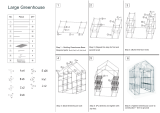 Trademark HW155001 User manual
Trademark HW155001 User manual
-
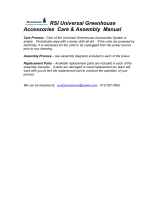 RSI RSI-EC4 User manual
RSI RSI-EC4 User manual
-
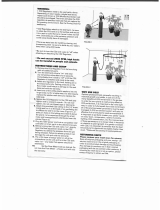 Viagrow VCO2REG User manual
Viagrow VCO2REG User manual
-
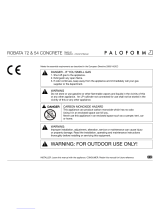 Paloform robata 72 Installation and Owner's Manual
Paloform robata 72 Installation and Owner's Manual
-
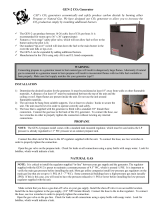 CAP GEN-2 Operating instructions
CAP GEN-2 Operating instructions
-
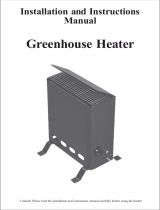 LIFESTYLE APPLIANCES LFS921P Installation And Instruction Manual
LIFESTYLE APPLIANCES LFS921P Installation And Instruction Manual
-
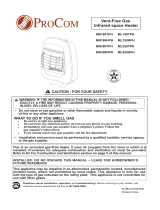 ProCom Heating MN180TPH User manual
ProCom Heating MN180TPH User manual
-
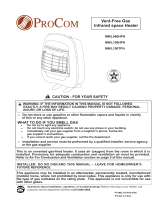 ProCom Heating MN/L060HPH User manual
ProCom Heating MN/L060HPH User manual
-
Williams 2696541 User manual
-
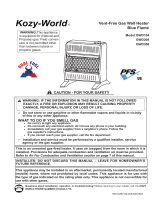 Kozy-World GWD104 User manual
Kozy-World GWD104 User manual


























